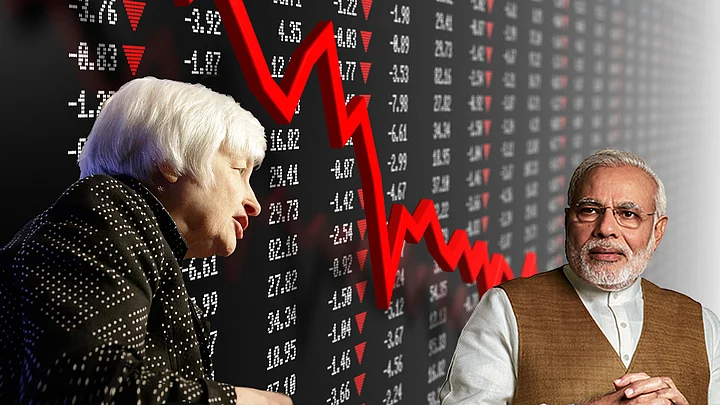One of the most challenging year for financial markets since the 2007-2008 meltdown is coming to an end. Almost every financial asset class has been in trouble in 2015. Commodities, precious metals, equities and now bond markets have a sorry story to tell. Unfortunately, as we near the end of 2015, world financial markets are rolling over their trouble to the next year.
Volatility Plagued Global Markets
Oil prices continue to move southward as the oil cartel refuses to cut production despite a global slowdown. The move has resulted not only in a sharp fall in oil prices but also a downward trajectory in the prices of other metals.
Lower oil prices have been one of the biggest reasons for the fall in financial markets, especially equity markets, in emerging economies like India. Low oil prices meant that oil rich economies of West Asia found it harder to balance their budget from oil revenues and thus had to dip into their savings. Their savings were invested in equity markets globally, especially in emerging markets, which normally give a higher return. Reports say that the Sheikhs have already withdrawn over $50 billion from world markets.
The other reason for the increased volatility has been the imminent interest rate hike by the US Federal Reserve. The threat has been looming large for the last six months, but the latest comments from Fed chair Janet Yellen suggests that it could well become a reality in mid-December 2015. Envisioning a rate hike, fund houses have been withdrawing money from world markets and deploying it in the US.
Both these events have triggered volatility in global markets in 2015 and the trend is likely to continue in 2016.
2015 Rewind
- Global market volatility was triggered by decline in oil prices and impending rate hike by the US Fed.
- The Indian equity market was among the worst performers this year.
- Foreign investors withdrew nearly $1.6 billion from India since November 2015.
- The inability to push through meaningful economic reforms hit financial markets.
- Despite the 8.9 percent yearly fall in the Sensex, Indian stocks were among the costliest.
India Beset With its Own Set of Problems
As though global turmoil was not enough, the Indian economy had its own set of problems. The inability of the government to push through reforms, losses in state elections and a hostile Opposition meant that the economy chugged along slowly.
However, as the year comes to an end there are visible signs of green shoots in the economy. The index of Industrial Production (IIP) posted a strong 9.8 percent jump in October, prompting corporate India to call it a morale booster. There are signs of movement in the economy with government expenditure and order flow picking up. The ball is now moving towards the private sector’s court which will give the next real boost to the market and the economy.
For an Indian equity market investor, 2015 was a forgettable year. Benchmark indices look set to end on a weak note, although smaller companies have so far outperformed.
How India Stacks up Globally
Indian equity markets have been among the worst performing globally. Since the start of the calendar year, India’s key benchmark index, the BSE Sensex, have fallen by nearly 8.93 percent. Brazil has taken the hardest hit with a 9.49 percent fall in the benchmark index, followed by UK with a 9.34 percent decline and Hong Kong with a 9.07 percent fall. Brazil and Hong Kong have been hit because of their dependence on the Chinese economy, while markets in Britain have been affected by the possibility of a Brexit (Britain’s exit from the European Union) and falling oil prices. Two of the world’s largest oil companies – British Petroleum and Shell are listed in the UK and carry a high weightage in its index.
Indian markets however, have been a victim of earnings downgrades by analysts as economic growth is yet to be reflected in corporate earnings and foreign investor inflows. FIIs (foreign institutional investors) have withdrawn nearly $1.6 billion from the Indian equity markets since November 2015.
Indian Stocks Among the Costliest
India is a tail-ender among global market leaders.
Measured on the basis of where markets are trading currently with respect to the year’s (2015) high and low range, Indian markets are trading close to the lowest level during the year. At 25,044 BSE Sensex is within one percentage point of its lowest level of the year 24,838 witnessed in September 2015. The benchmark index in the US, the Dow Jones, is the strongest market trading at 6.3 percent away from their yearly highs, which to some extent explains the outflow of money from other markets into the US.
Unfortunately, based on historic valuations Indian markets are among the costliest despite the fall. Indian markets trade at a price earnings of around 21 (based on reported numbers) while the corresponding number for the US is at 19.8, Hong Kong at 11.2 and China at 6.6.
Unless the economy changes rapidly for good, and that’s reflected in corporate numbers, it won’t be easy for India to attract foreign funds going forward.
